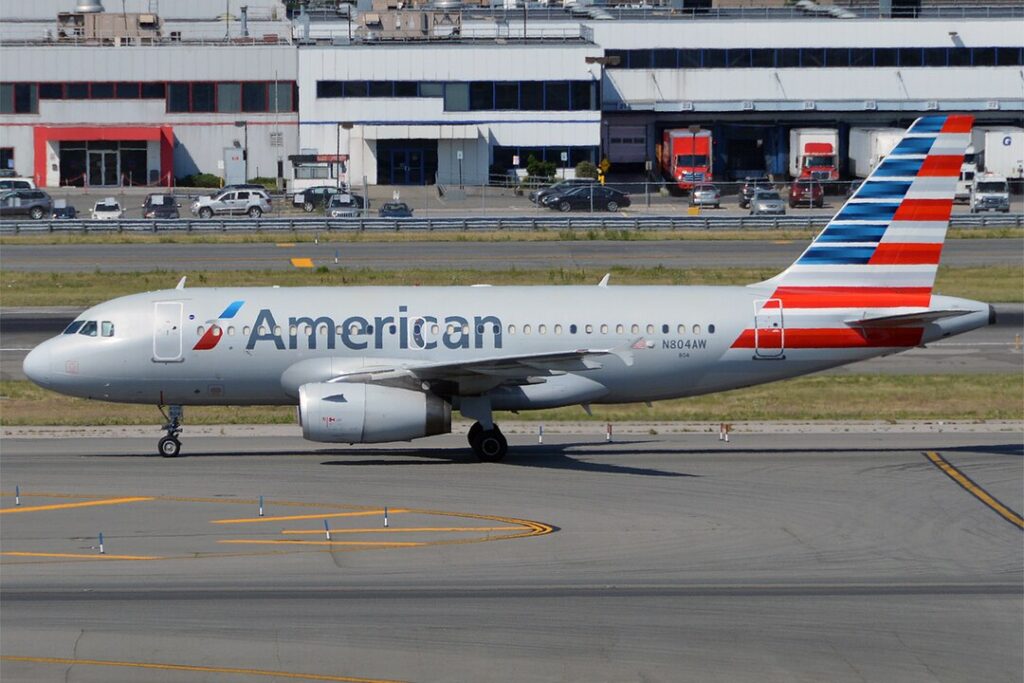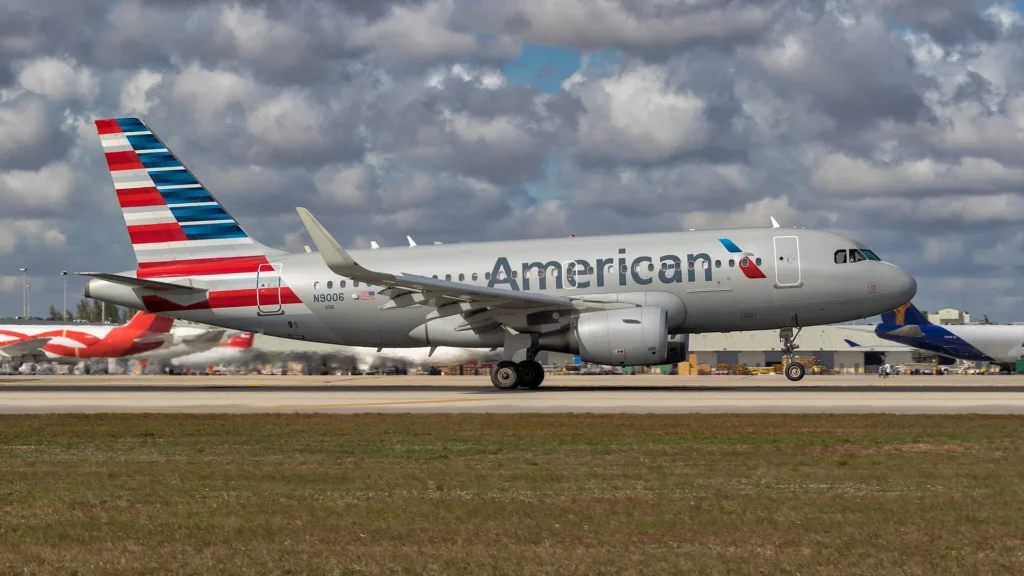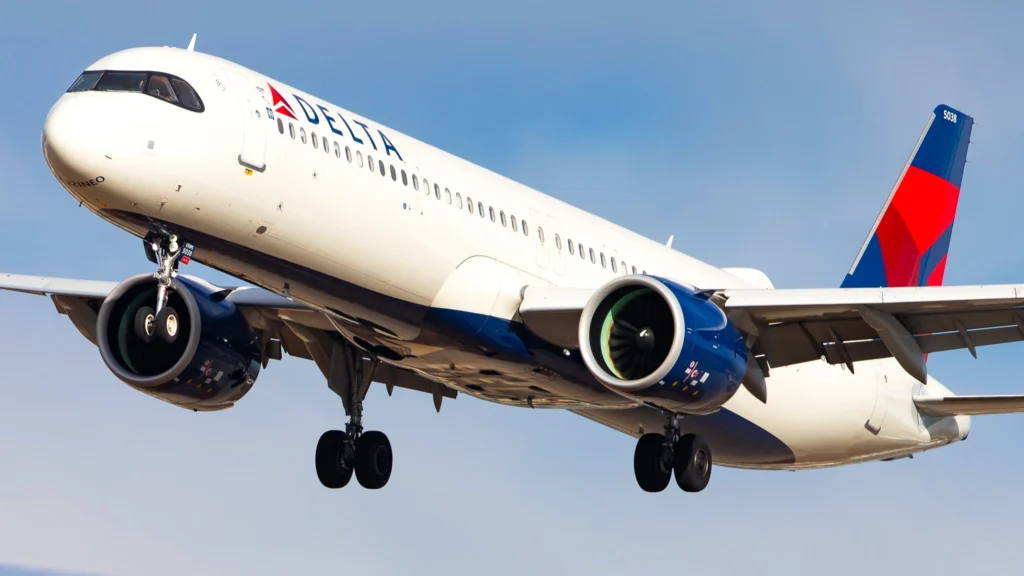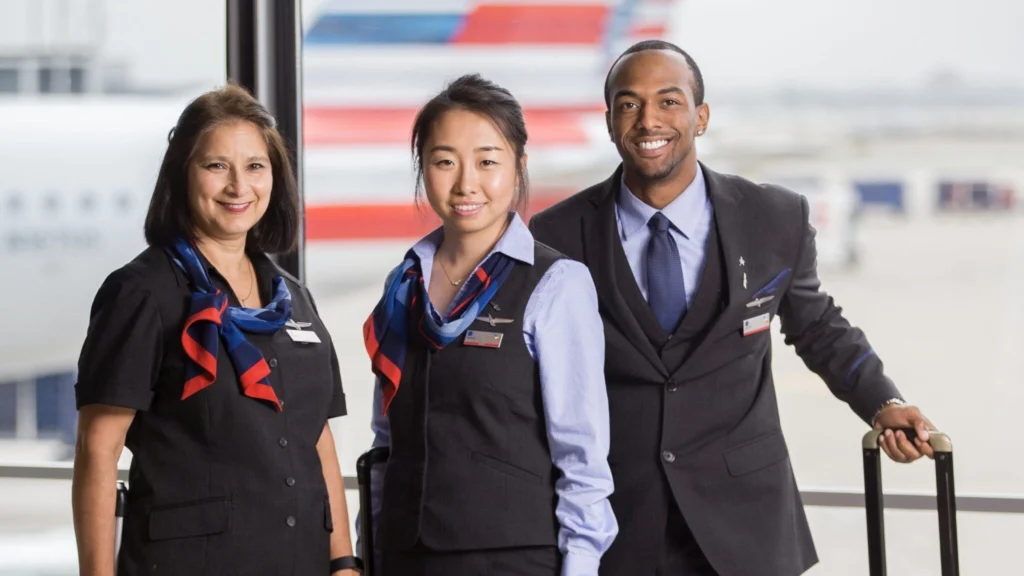
FORT WORTH— American Airlines (AA) is modifying its Airbus A319 fleet operating out of hubs like Dallas/Fort Worth International Airport (DFW) to increase first-class seating, a move that compromises both passenger and crew space.
The airline has begun retrofitting these aircraft to fit more premium seats without removing coach seats, instead reducing legroom and rearranging galleys and lavatories to make space.
 Photo: By Anna Zvereva from Tallinn, Estonia – American Airlines, N804AW, Airbus A319-132, CC BY-SA 2.0, https://commons.wikimedia.org/w/index.php?curid=41996012
Photo: By Anna Zvereva from Tallinn, Estonia – American Airlines, N804AW, Airbus A319-132, CC BY-SA 2.0, https://commons.wikimedia.org/w/index.php?curid=41996012American Adds First Class Seats to A319s
American Airlines Airbus A319 jets, originally outfitted with in-seat entertainment and standard cabin layouts, are being converted into denser “Oasis” configurations. These modified aircraft will now feature an extra row of first class, increasing capacity but decreasing comfort.
Unlike larger aircraft like the Boeing 737 (which carries 16 first-class seats) or A321neos (with 20), the A319s only offer 8 premium seats, limiting their revenue potential from premium passengers.
Instead of eliminating economy seats, American is squeezing space elsewhere. Seat pitch in coach will be reduced, and galleys and lavatories will be compacted to fit the new layout.
The updated configuration not only impacts passengers—it directly affects crew as well, stated Gary Leff of Viewfromthewing.
 Photo: By Nathan Coats from Seattle, WA, United States of America – 02092018_American Airlines_A319_N9006_KMIA_NASEDIT, CC BY-SA 2.0, https://commons.wikimedia.org/w/index.php?curid=76838600
Photo: By Nathan Coats from Seattle, WA, United States of America – 02092018_American Airlines_A319_N9006_KMIA_NASEDIT, CC BY-SA 2.0, https://commons.wikimedia.org/w/index.php?curid=76838600Lavatory-Mounted Jump Seats Spark Controversy
One of the most criticized aspects of this redesign is the positioning of flight attendant jump seats directly on lavatory doors in the rear galley.
Internal diagrams show the number 4 jump seat attached to the lavatory (labeled “LAV G”) in the rear section next to the galley “G5.” This layout compromises privacy and safety, placing the crew in an awkward position whenever the lavatory is in use.
This change starkly contradicts a previous public statement made by former American Airlines CEO Doug Parker, who mocked competitors like Delta Air Lines (DL) for similar arrangements.
“We’re not ever gonna do anything like that,” he once said, promising American wouldn’t follow that design path. Yet, the current layout mirrors what Delta and United Airlines (UA) have already implemented using SpaceFlex lavatories on their A321s.
 Photo: Clément Alloing
Photo: Clément AlloingImpact on Passengers and Crew
The densified layout means:
- Narrower lavatories with shallow sinks are prone to splashback
- Increased potential for crew-passenger conflicts in rear galley zones
- Reduced crew workspace and galley functionality
- A diminished overall passenger experience due to tighter spacing
By prioritizing seat count over cabin comfort, American risks frustrating both customers and frontline staff, especially on longer routes where these design limitations become more evident.
 Representative Photo: American Airlines
Representative Photo: American AirlinesIndustry Trend or Regressive Move?
While American Airlines defends these changes as an efficiency upgrade, critics argue it’s a step back for passenger comfort and crew dignity.
Other airlines like Delta and United have adopted similar configurations, but American’s decision is particularly notable due to its reversal of previously stated values.
This evolution underscores a broader trend in aviation: increasing revenue per flight often comes at the cost of onboard experience, even for the crew.
Stay tuned with us. Further, follow us on social media for the latest updates.
Join us on Telegram Group for the Latest Aviation Updates. Subsequently, follow us on Google News
American Airlines First Class Passenger Downgraded for Ex-President Joe Biden
The post American Airlines Adds First Class Seats, Shrinks Space for Attendants appeared first on Aviation A2Z.











![Ruszyły kontrole na granicy z Niemcami i Litwą [AKTUALIZACJA]](https://zachod.pl/wp-content/uploads/2025/07/b40c941ece612dcdc7a03edffae6f10c_xl.jpg)

![Królewiec – dawny Kaliningrad. Jak kształtowała się historia miasta? [ZDJĘCIA]](https://static.olsztyn.com.pl/static/articles_photos/40/40796/7ee45ba64e36b52d5d601ebe26002d16.jpg)
